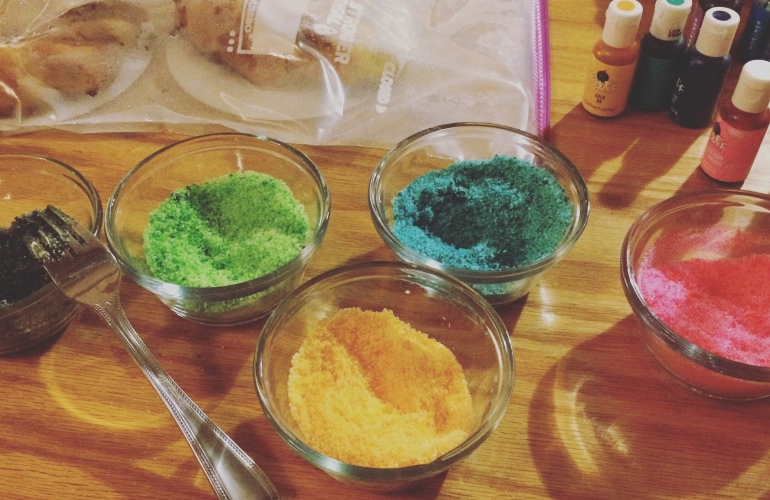I am finally (finally!) writing about baking king cakes. Because I have a lot to say, and why not build up to it, this will begin a short series on the subject to be posted as we get closer and closer to Mardi Gras day! This year that’s on March 1st.
Even though it’s the last thing to go on the cake, I always think of dying sugar as one of the first steps to king cake baking. Maybe because it’s the first thing that I learned as a kid. Or because it’s easy to make ahead. Or that you really want to have this all ready to go when you ice the cake.
Almost all king cakes come with a traditional combo of purple, green and gold granulated sugar topping them. But I believe Mardi Gras is about fun, creativity and experimentation so I’ve ventured out to a wide variety of colors. I’ve also tried creating my own organic dyes or just used no dye at all (spoiler: that’s no fun).
The Basics
It’s pretty simple to start. Just put a few drops of food coloring in a small bowl with your granulated sugar. The color will clump the sugar so I like to stir it in with a fork so that I can use to break up the clumps as they form.
Continue to mix until the sugar is pretty much uniform in color. It doesn’t need to be perfectly uniform for most uses. Once you sprinkle it on, the coloring hits some moisture and it evens out on its own. For similar reasons, you should be careful about adding too much color. It may feel like you need more in order to get the color uniform but the more liquid added to the mix, the harder it will be to keep the sugar in an easy-to-sprinkle form.
Here you can see a photos from the past few years and you’ll see sometimes I use the back of a spoon. Either way, I press it into the clumps to break them up as I mix.


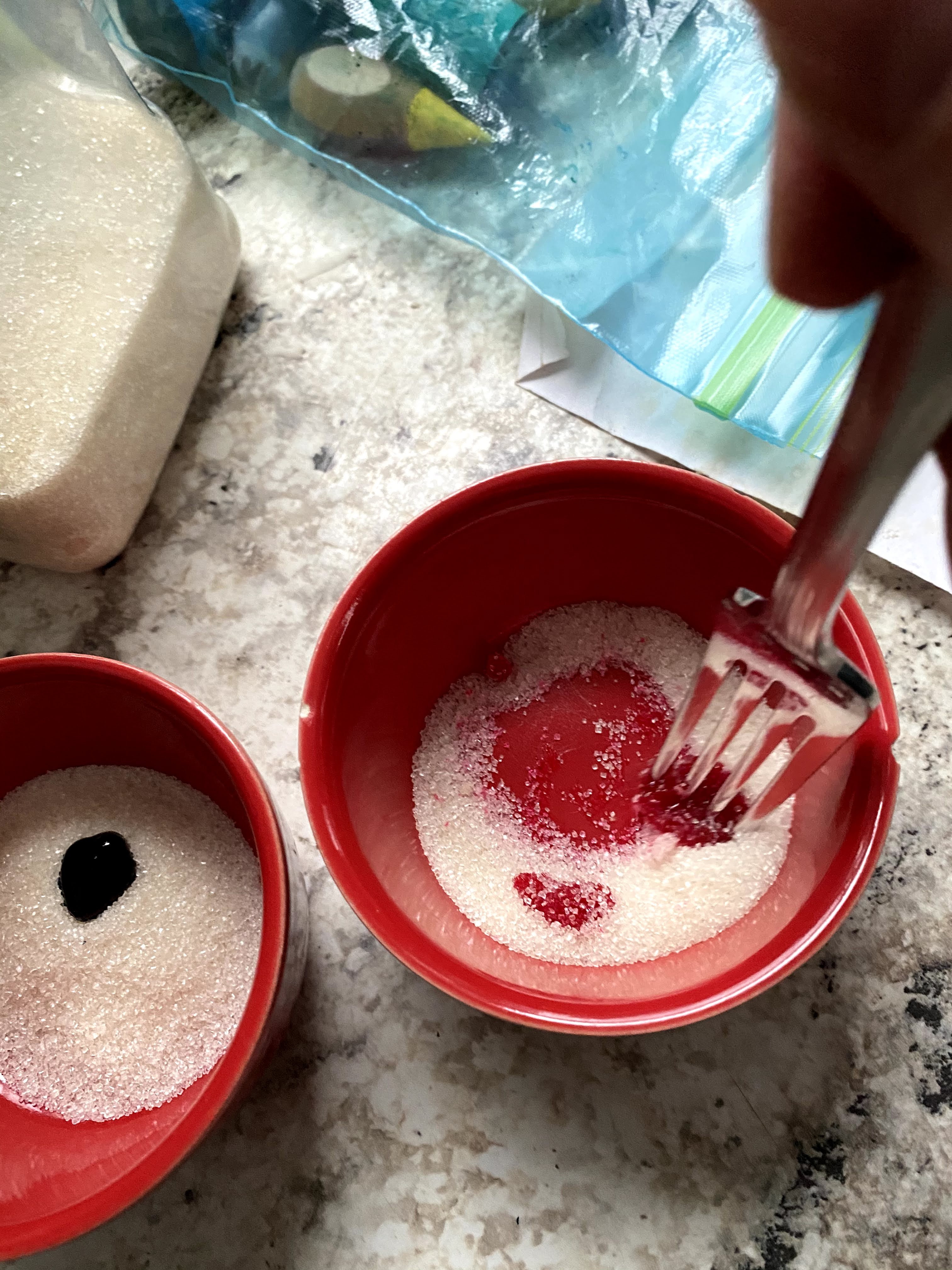

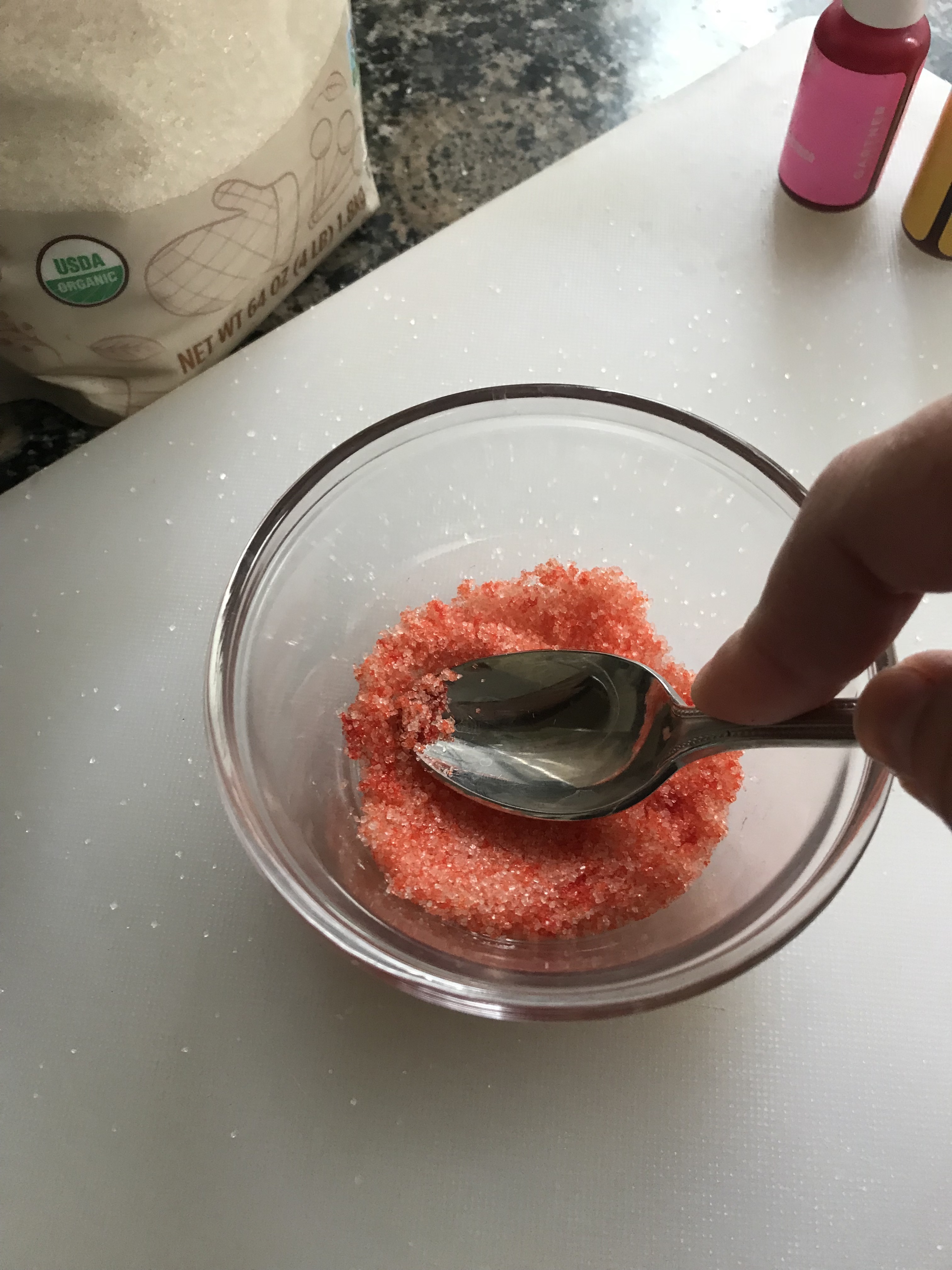
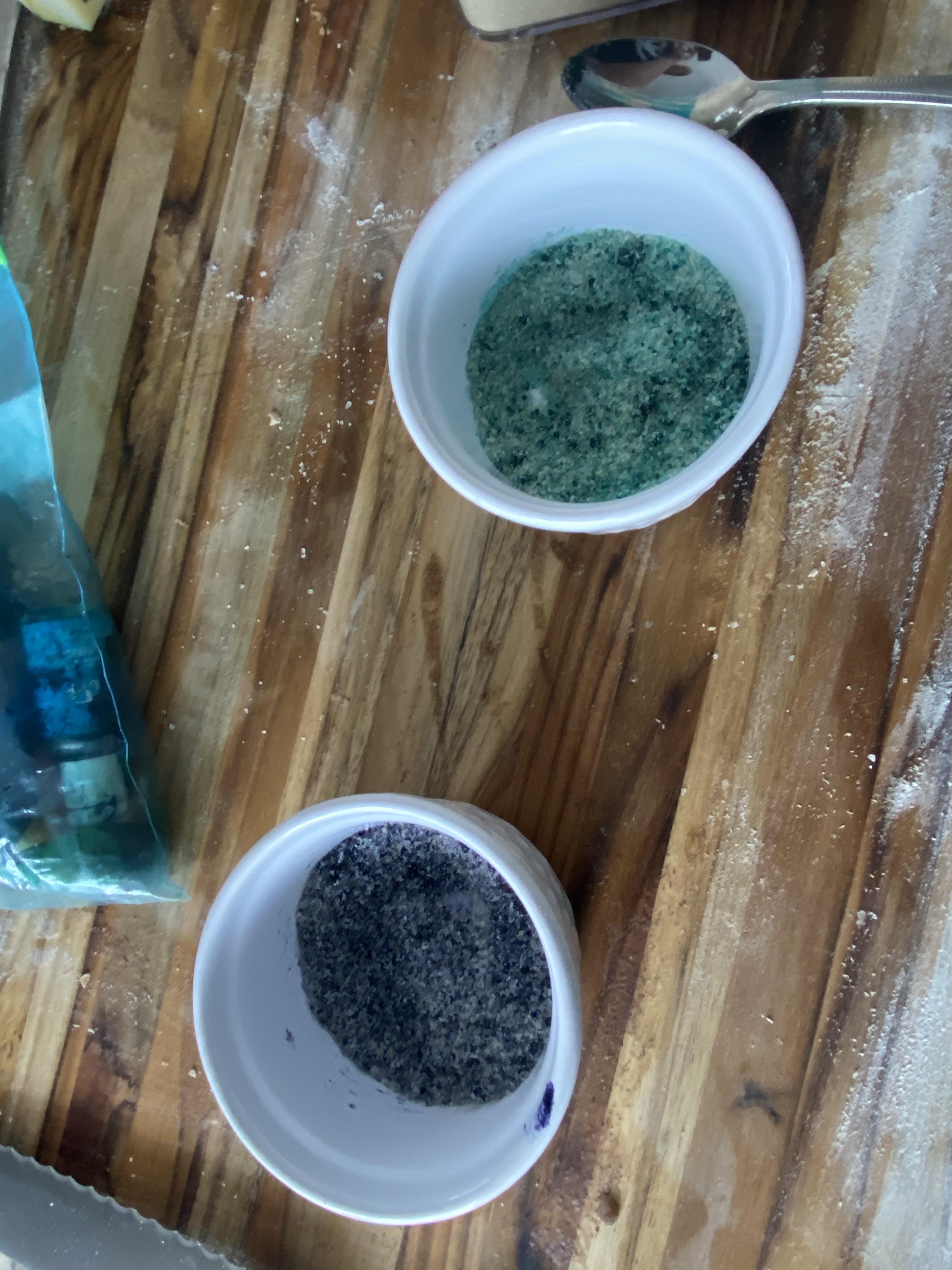

Color Mixing
Most grocery store food coloring packs come with primary colors plus green. If you’re doing traditional Mardi Gras colors, that means you need to mix your own purple. I also make other colors when I’m feeling creative. I find that if you add colors to sugar to mix them, some grains of sugar pick up one color or another rather than the new mixed color. It seems almost like they are saturated with that color and won’t mix together at that point.
I’ve definitely had a bowl full of individual red and blue sugar grains in the past! This actually isn’t the worst problem to have because the moisture on the cake seems to even things out and the result is a purple look. I still try to avoid it by adding the color to the bowl first and mixing it before adding the sugar.


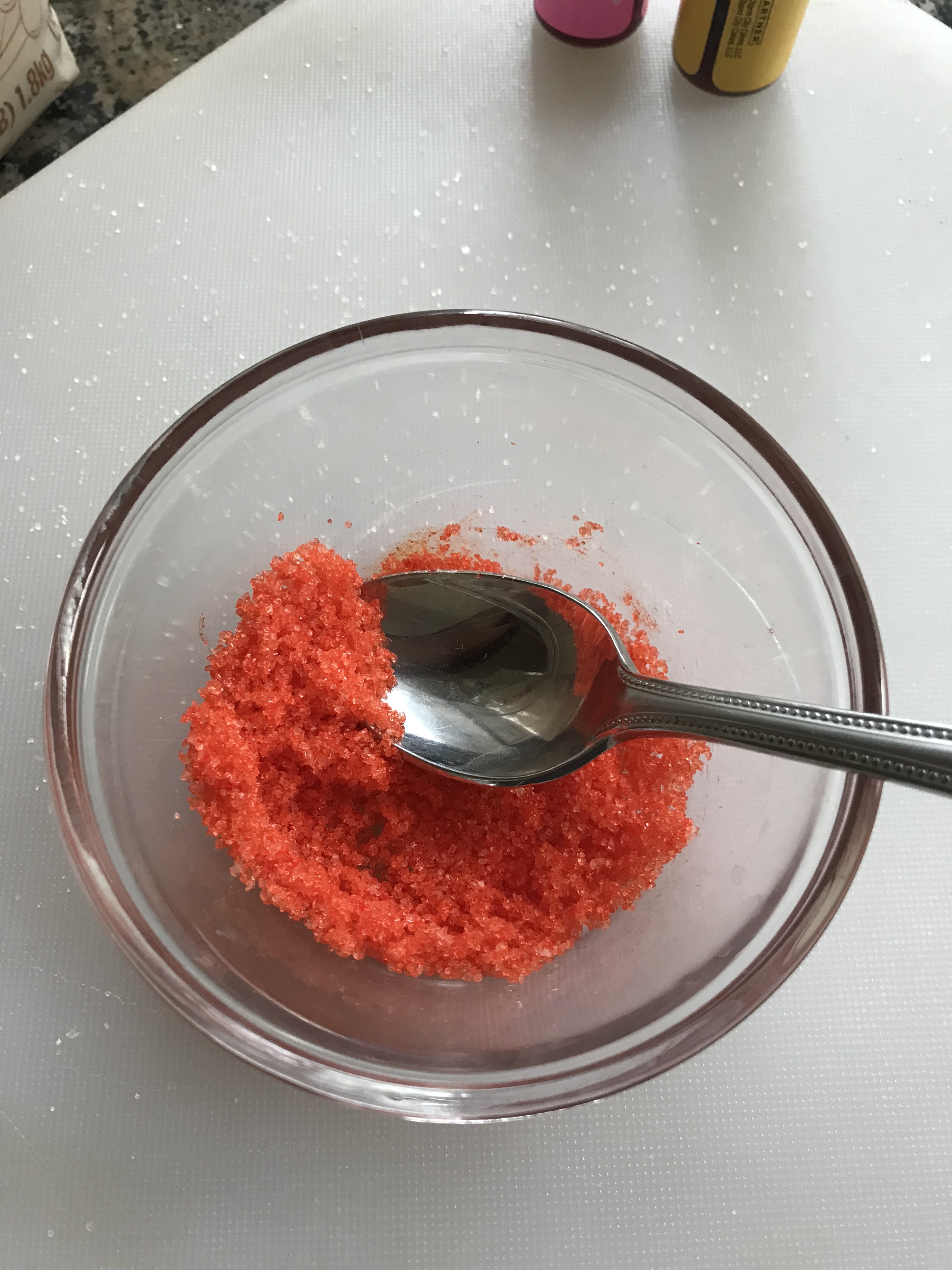
Here I mixed an electric pink color with orange to achieve a color closer to coral.
DIY Organic Dyes
It’s been a few years since I played with this so I don’t have photos for some of the options I will describe here.
It’s quite fun to try out natural food dyes. You can buy natural food dyes but they tend to be pretty pricey and for things you may just have around the house. Before you venture on, some of the foods I’m using to color things may sound unappetizing on a dessert. Just remember, there’s barely a drop and it shouldn’t be apparent in the flavoring.
Another important thing to keep in mind is that natural food colors are generally not going to be as brightly colored as commercial ones. Think Earth tones because that’s exactly what they are!
Turmeric has turned out to be a terrific yellow/gold food coloring. It’s often my preferred way to color things since it also has purported health benefits.

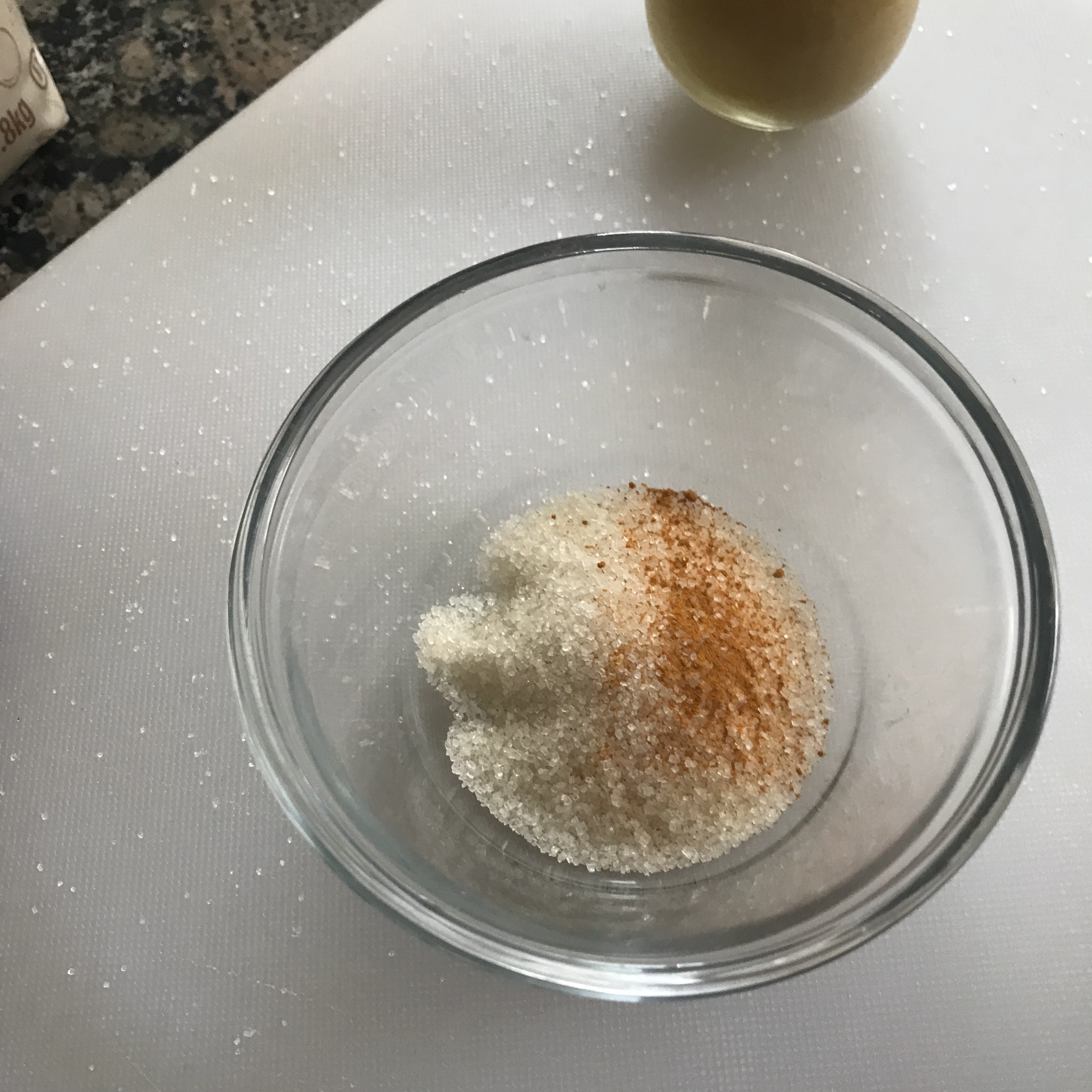
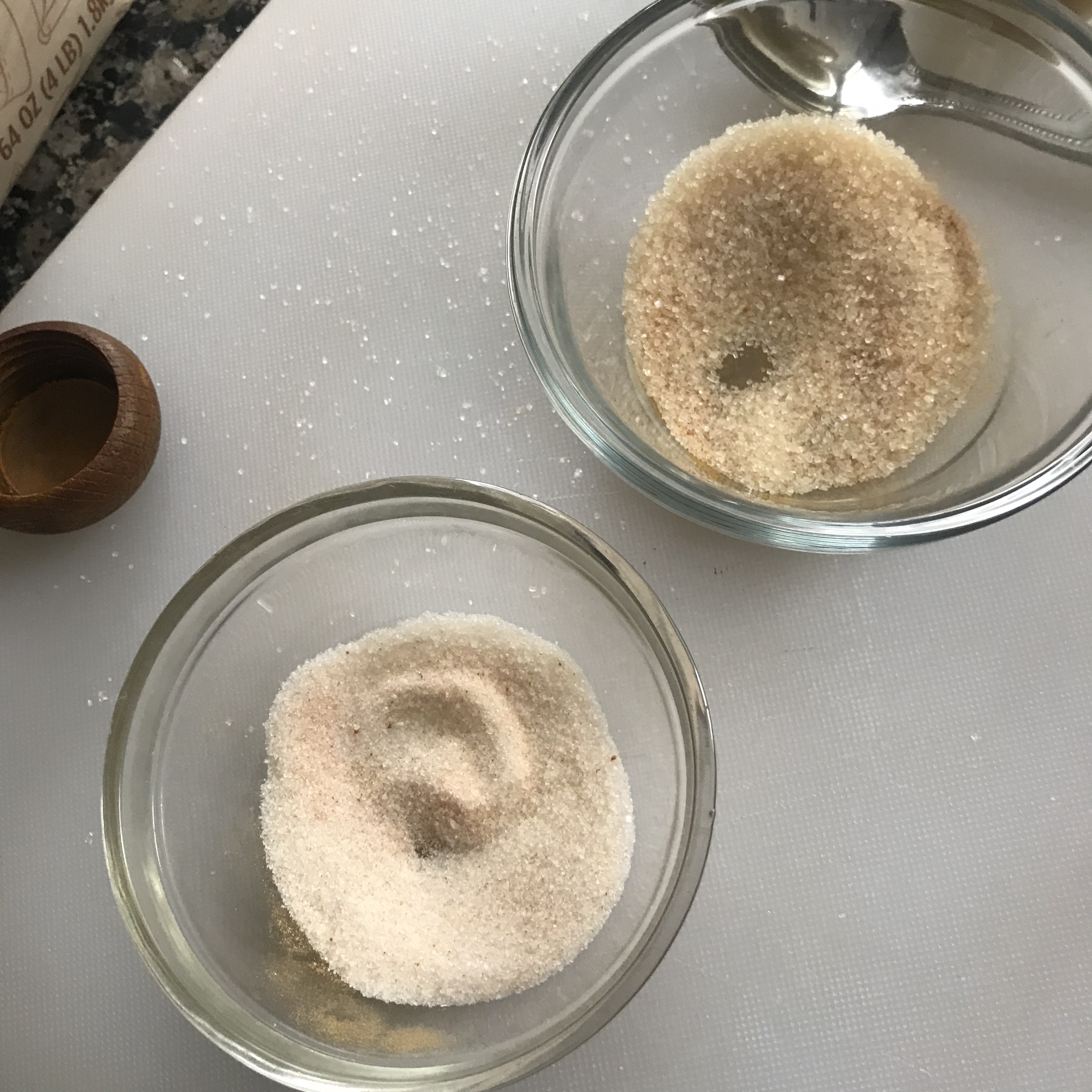
Mixing a powder into as a food coloring seemed like it might be an issue but I find it works just fine. I sometimes spritz the sugar mixture very slightly to help it stick.
Juiced spinach is a fantastic green dye. It makes the sugar a more olive green color and the color is very nicely concentrated just like a store bought food dye. I wish I had photos for you but I don’t currently have a juicer so I can’t recreate it.
I’ve struggled with finding a purple dye that I’ve really liked. The biggest issue I’ve faced are colorings that are too watery. On the bright side, blue is not really a color that occurs in nature so most blue foods are potential sources of purple dye. Think blueberries. The trick is to cook whatever you have down enough to make it more like a food dye which can be time-consuming. Purple cabbage is a great bet but will lead to your whole house smelling of cabbage so be warned. It’s hard to get a concentrated color from blueberries which are quite watery but it does seem the most appetizing.
Bright Colors, Gel Food Dyes and More
I love the Duff Goldman food dyes but I’m not sure if they’re still being made. I was unable to find a handy link for purchasing them but I believe I’ve bought them from Michael’s in the past. Using them, I’ve been able to create some really fun, colorful cakes.
Gel food coloring works fine as well. You just want to be careful not to use too much because it can be easier to squeeze out a large amount when it’s not drop by drop.
More recently I added in a some gold sprinkles I had on hand so I had my own colored purple(ish), teal and gold sprinkles. You can see that one in the bottom photo here along with other cakes I’ve made over the years!
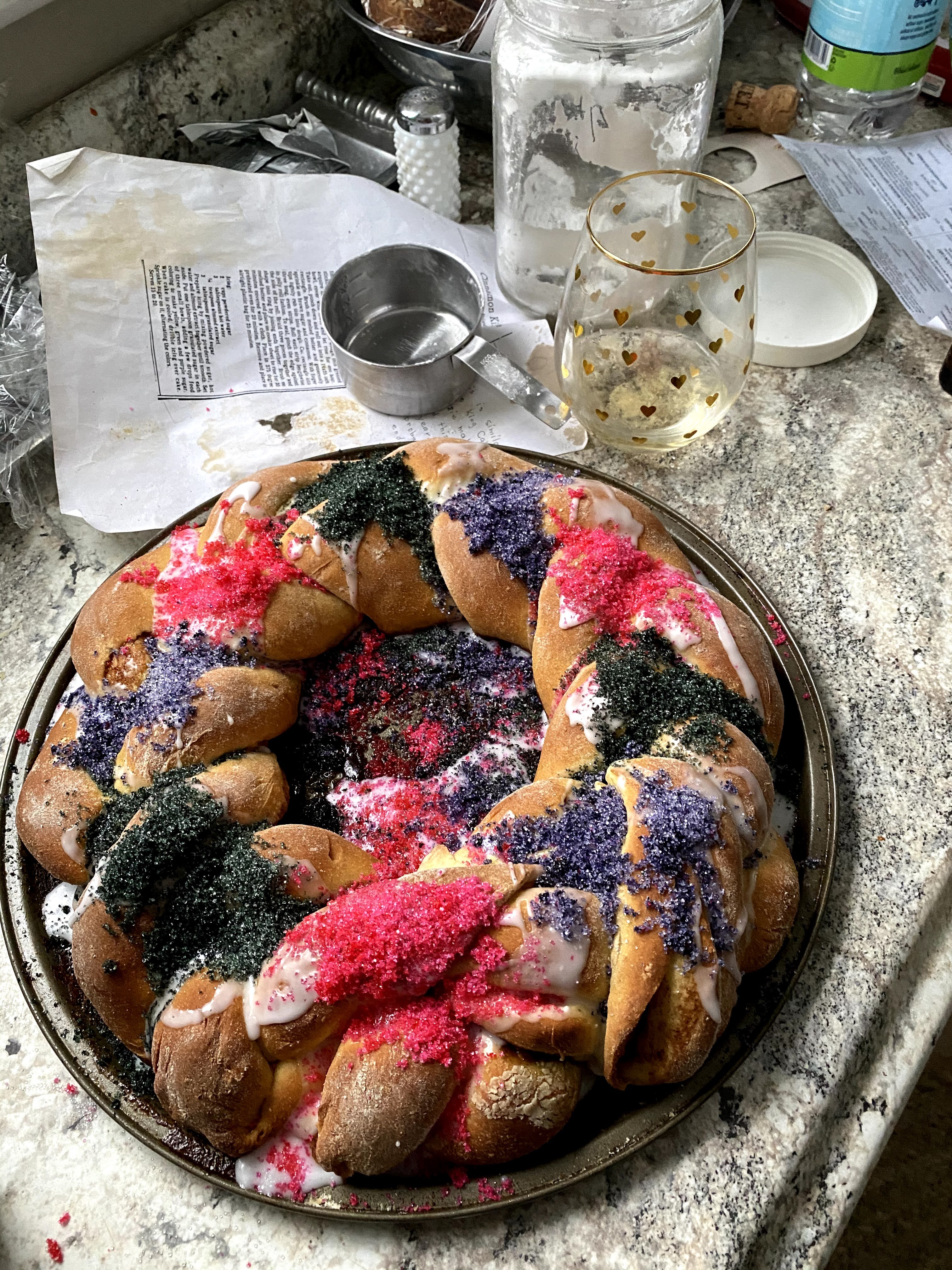

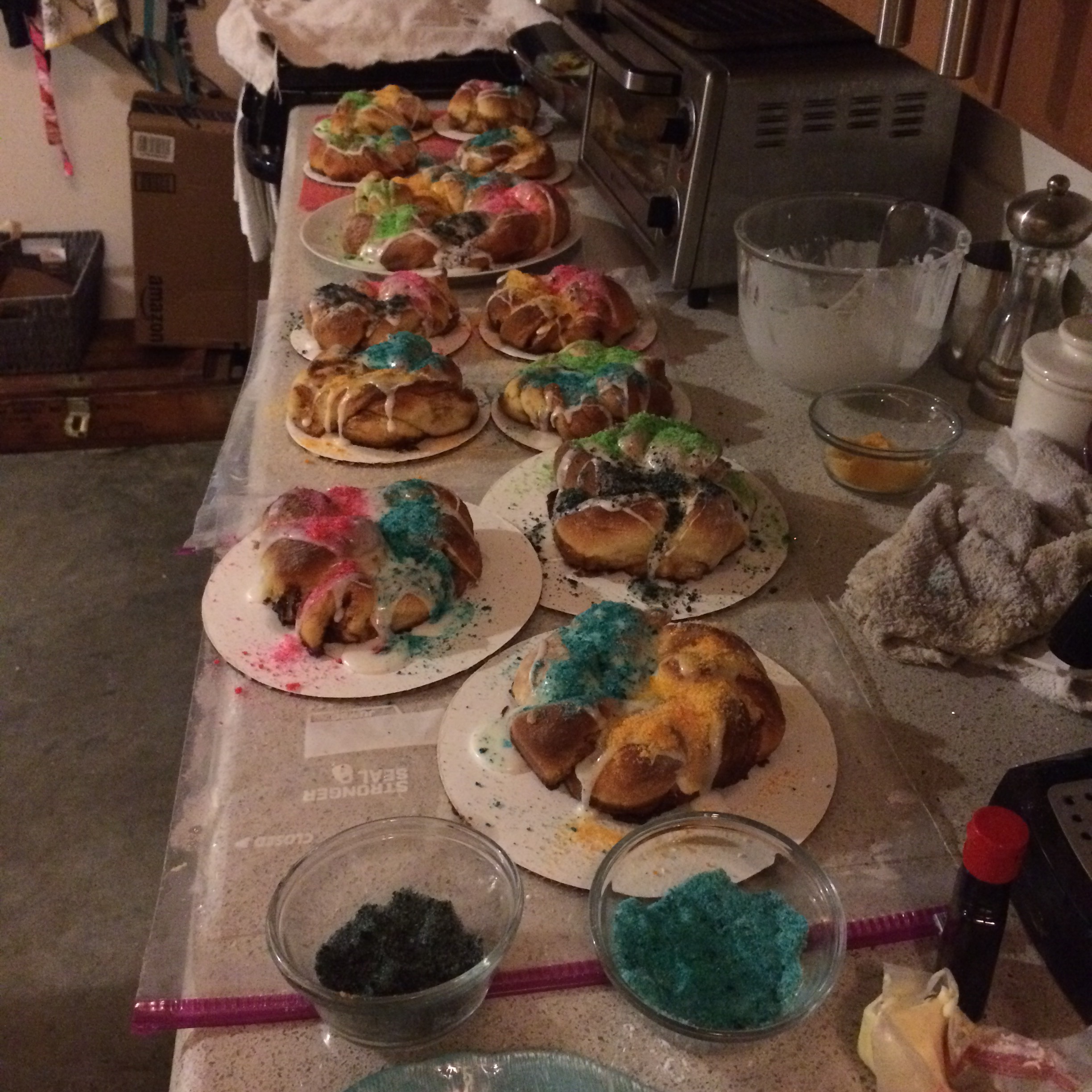

Have fun coloring sugar! And be careful about what else you handle afterwards – it’s easy to get on your hands. 😎

